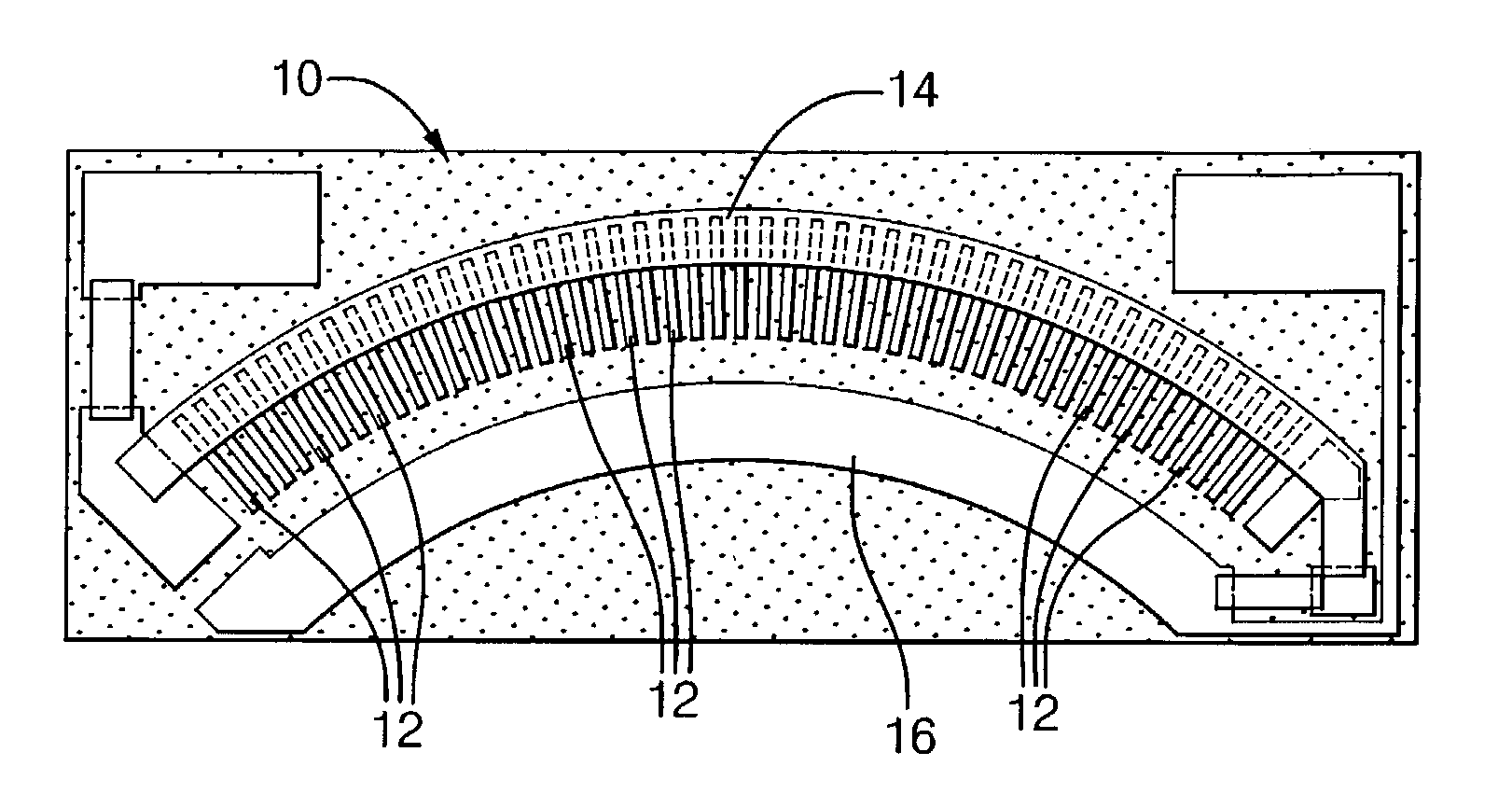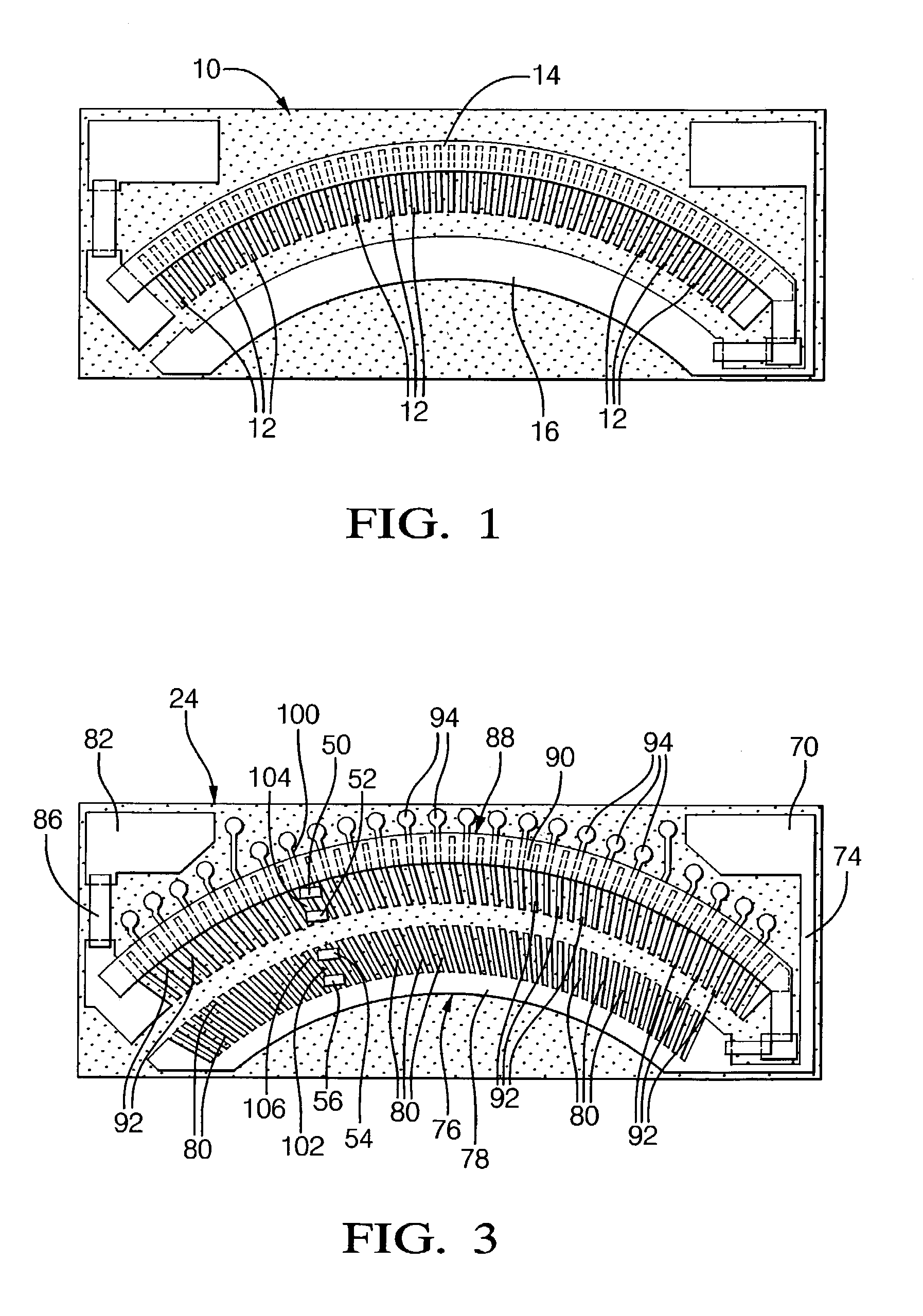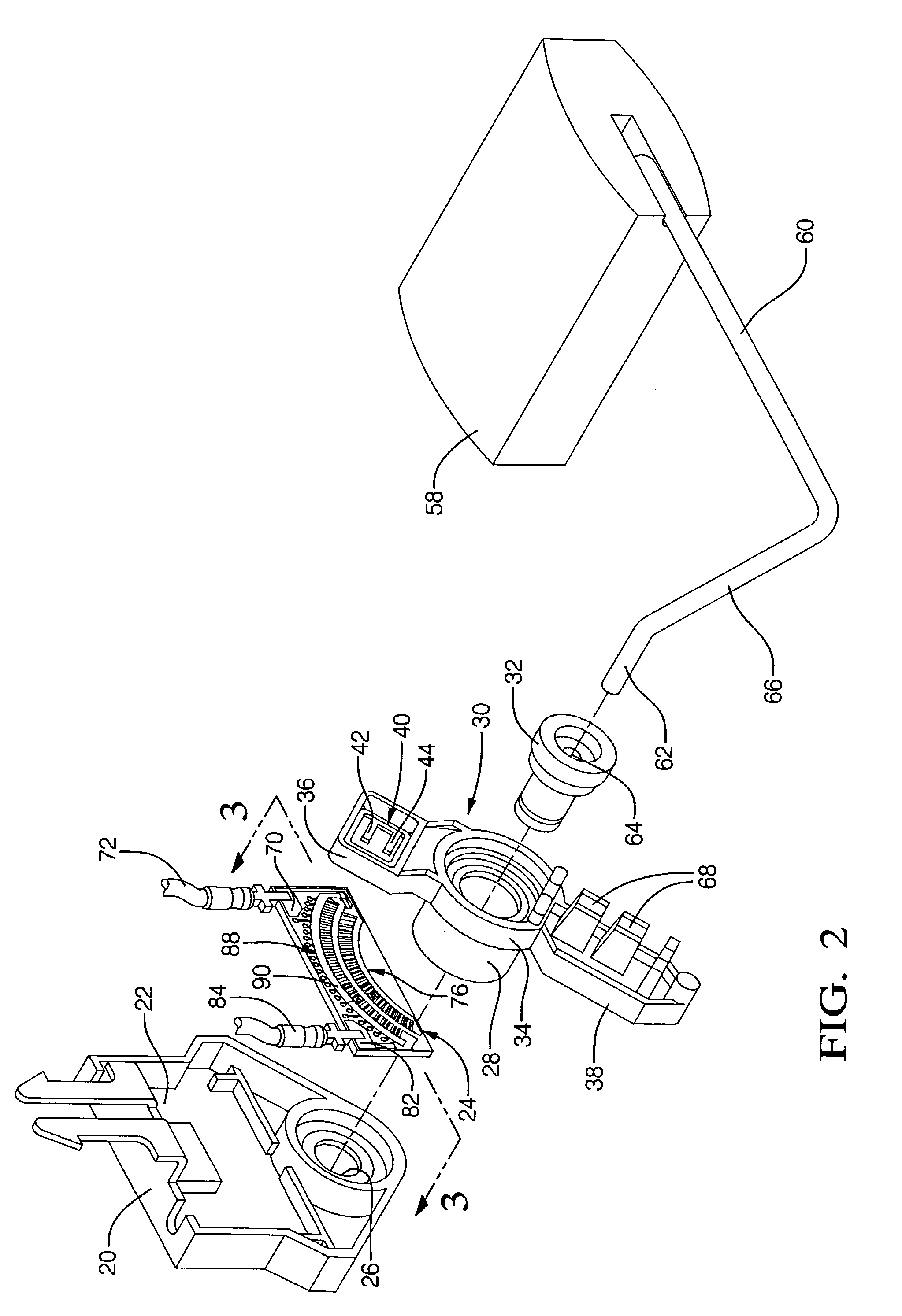Sensor with amorphous electrode
a technology of amorphous electrodes and sensors, applied in liquid/fluent solid measurement, instruments, machines/engines, etc., can solve the problems of abrasion or wear, design is susceptible to the buildup of contact resistance, and the “open circuit” conditions
- Summary
- Abstract
- Description
- Claims
- Application Information
AI Technical Summary
Benefits of technology
Problems solved by technology
Method used
Image
Examples
example 1
[0053]A thick film ink of 17.0 wt % 1-methoxy-2-propanol acetate solvent, 8.0 wt % butyl acetate solvent, 7.6 wt % acrylic resin binder, 3.2 wt % methyl methacrylate polymer, 9.0 wt % ethanol wetting agent, 51.2 wt % amorphous alloy Pd47Ni47P6, and 6.4 wt % metallic silver, is made, based upon the total weight of the ink. An aluminum oxide fuel ceramic substrate is screen printed with the ink. The ink is fired up to 460° C. for 2 hours. The fired electrode includes 88.9 wt % amorphous alloy and 11.1 wt % metallic silver, based upon the total weight of the fired electrode.
example 2
[0054]Surfaces not intending to be covered on an aluminum oxide substrate are masked off. Amorphous alloy Pd40Ni40Cu15P5
particles in a suspension with nickel sulfamate solution are electroless deposited onto the masked aluminum oxide substrate. A nickel matrix with amorphous alloy inclusions is deposited. The inclusions having a diameter of about 0.5 μm to 10 μm make up about 38 wt % of the electrode volume. The substrate is fired 490° C. for 2 hours. The fired electrode includes 67.9 wt % amorphous alloy and 22.1 wt % nickel, based upon the total weight of the fired electrode.
example 3
[0055]A thick film ink of 34.8 wt % 1-ethoxypropan-2-ol solvent, 5.0 wt % cellulose ethylether resin, 7.0 wt % ethanol wetting agent, 47.6 wt % amorphous alloy Zr55Cu30Ni5Al10, and 5.6 wt % Sn85In11Ag3Cu1 is made, based upon the total weight of the ink. An aluminum oxide fuel ceramic substrate is screen printed with the ink. The ink is fired up to 360° C. for 2 hours. This ink has desirable reflow properties at temperatures as low as 240° C. The fired electrode includes 89.4 wt % amorphous alloy and 10.6 wt % Sn85In11Ag3Cu1, based upon the total weight of the fired electrode.
PUM
| Property | Measurement | Unit |
|---|---|---|
| total thickness | aaaaa | aaaaa |
| total thickness | aaaaa | aaaaa |
| thickness | aaaaa | aaaaa |
Abstract
Description
Claims
Application Information
 Login to View More
Login to View More - Generate Ideas
- Intellectual Property
- Life Sciences
- Materials
- Tech Scout
- Unparalleled Data Quality
- Higher Quality Content
- 60% Fewer Hallucinations
Browse by: Latest US Patents, China's latest patents, Technical Efficacy Thesaurus, Application Domain, Technology Topic, Popular Technical Reports.
© 2025 PatSnap. All rights reserved.Legal|Privacy policy|Modern Slavery Act Transparency Statement|Sitemap|About US| Contact US: help@patsnap.com



